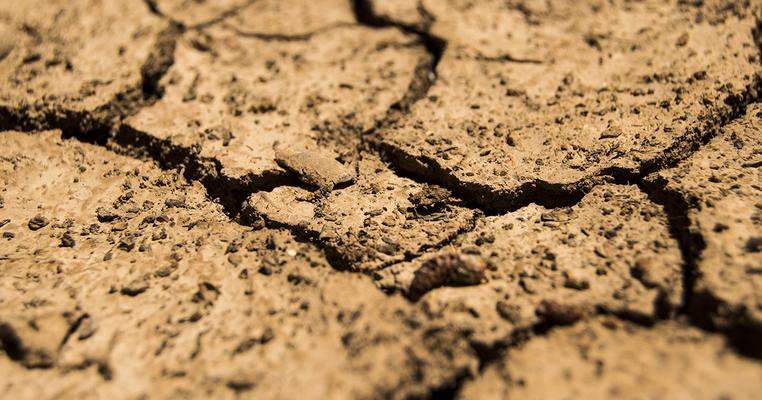
How Is Climate Change Affecting Mexico?
As Mexico City’s chief resiliency officer, Arnoldo Kramer, said to The New York Times, “Climate change has become the biggest long-term threat to this city’s future. And that’s because it is linked to water, health, air pollution, traffic disruption from floods, housing vulnerability to landslides — which means we can’t begin to address any of the city’s real problems without facing the climate issue.”
And we’d argue the same is true for the rest of the nation – and the world. Climate change touches every aspect of our lives.
Here are three leading ways climate change is already hitting Mexico and its people. Plus, as a bonus, two ways you can take action today to help solve the climate crisis.
HEAT
Here’s the climate reality: Since the 1960s, Mexico has gotten warmer. And scientists expect temperatures to keep rising.
In fact, by the end of this century, northern Mexico could see its average annual temperatures rise by 3 – 4 degrees Celsius (about 5.4 – 7.2 Fahrenheit). And the rest of the country? It could see temperatures climb by 1.5 – 2.5 degrees Celsius (about 2.7 – 4.5 Fahrenheit).
A few degrees might not seem like a big deal, but think of it this way: What’s the difference between 0 and 1 degree Celsius? Well, that’s the difference between ice and water. A small change in temperature can really disrupt the systems we depend on to survive.
As Mexico (and our world) becomes warmer, the fingerprints of climate change can be seen everywhere you look. Climate scientists observe impacts like sea-level rise, longer and more intense wildfire seasons, and devastating droughts (just to name a few). And more importantly, everyday people experience the effects.
As Arnoldo Kramer, Mexico City’s chief resilience officer, put it: “Climate change has become the biggest long-term threat to this city’s future." (cc: The Climate Reality Project Mexico & LATAM)
Posted by Climate Reality on Monday, February 20, 2017
WATER SECURITY AND DROUGHT
Here’s the climate reality: In Mexico, millions of people are at risk from a lack of adequate water due to climate change. And water supplies are already strained because of other factors like population growth.
Mexico City is especially thirsty. Centuries ago, the city (then called Tenochtitlan) was known as “the Venice of the New World” because of its enormous lakes. But today, Mexico City must pump water from deep underground – in fact, it gets “as much as 40 percent of its water from remote sources.”
Climate change, while not the only factor, is predicted to only make this dire situation worse, and the impact will fall heaviest on poor communities. We’re already seeing these inequities play out as water becomes scarce in cities like Cape Town, South Africa.
Water insecurity also means food insecurity. In 2011, Mexico had what was described as its worst drought on record. More than 1.7 million cattle died of starvation or thirst – and at least 2.2 million acres of crops withered across at least five states. The government was forced to haul water to 1,500 villages and send food to farmers who lost all their crops.
So, how is climate change related to drought? As humans release more and more greenhouse gas emissions into the air, they trap more and more heat, meaning the air temperatures rise. And as air temperatures rise, more moisture evaporates from land and lakes, rivers, and other bodies of water. Warmer temperatures also increase evaporation in soil, which affects plant life and can reduce rainfall even more.
>> Related: Download our free e-book, Climate Change and the Water Cycle <<
AGRICULTURE
Here’s the climate reality: Climate change is making Mexico’s land far less suitable for growing food and crops. And that’s already impacting families today.
In fact, climate change may lead to a 40 to 70 percent decline in Mexico’s current cropland suitability by 2030. Worse, this could soar to an 80 to 100 percent decline by the end of this century. We’re talking about Mexico potentially losing over half its workable farms in less than 12 years – and all of them by 2100. That’s not cause for concern – it’s a catastrophe in the making.
Loss of cropland can mean malnourished populations, displacement, and ultimately? Permanent migration, especially by rural families.
"A lot of [of Mexican migration] is being driven either by vulnerability to crop loss, or wage laborers losing their jobs because farmers can no long afford to hire them," said Arizona State University development economist Valerie Mueller.
HERE’S WHAT YOU CAN DO
Every year, Climate Realty trains thousands of new Climate Reality Leaders – everyday citizens who are committed to solving the climate crisis. At our Climate Reality Leadership Corps trainings, attendees work with former US Vice President Al Gore and leading climate scientists and communicators to learn how inspire action in their own communities.
Interested? Learn more about what it means to be a Climate Reality Leader today.
And if you’re looking for another way to take action, you can download our free e-book, Right Under Your Feet: Soil Health and the Climate Crisis, which gets into the details of how climate change impacts the two most basic things we need to survive – our water and our food. Download this free e-book and take action today!


